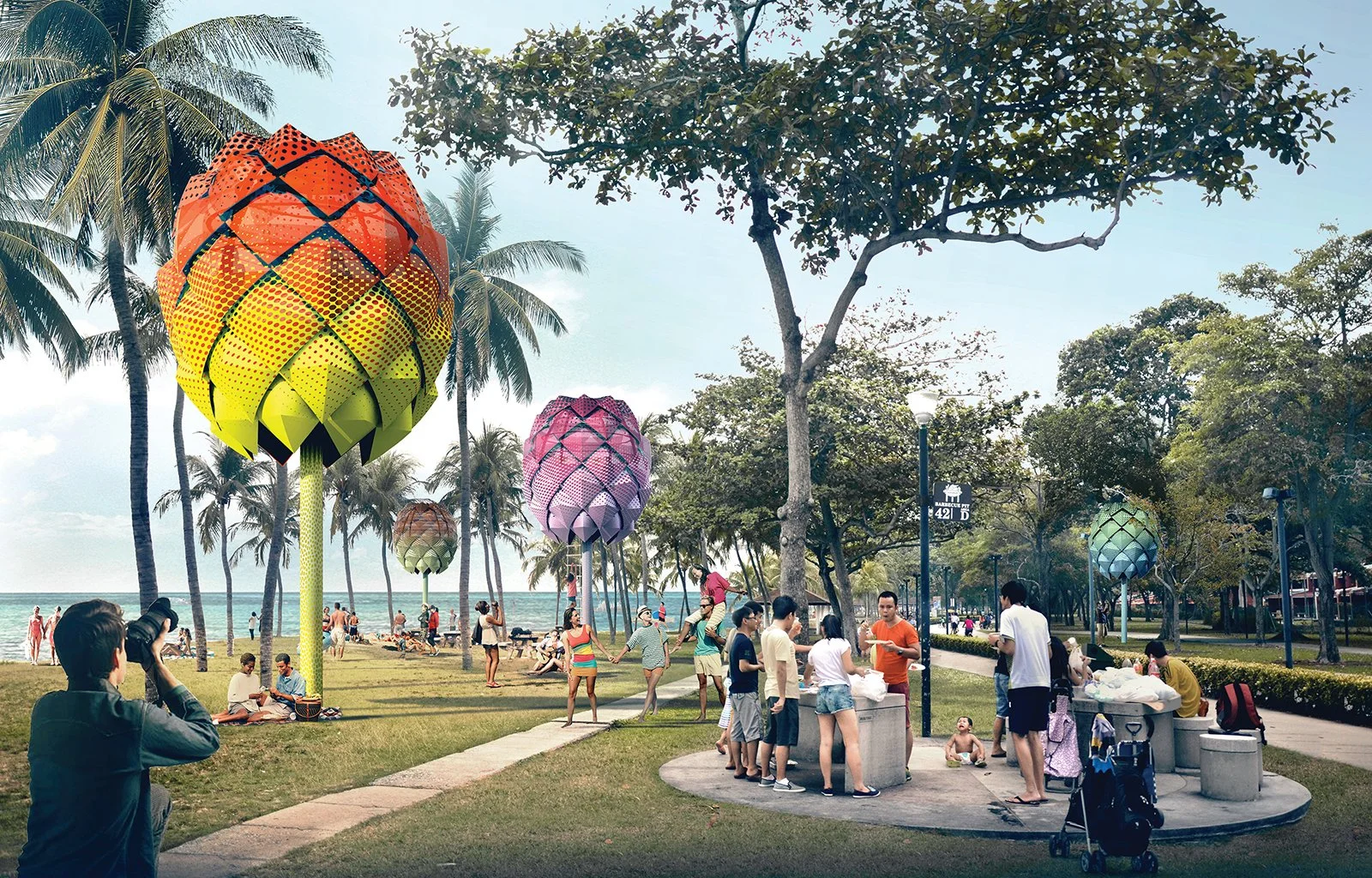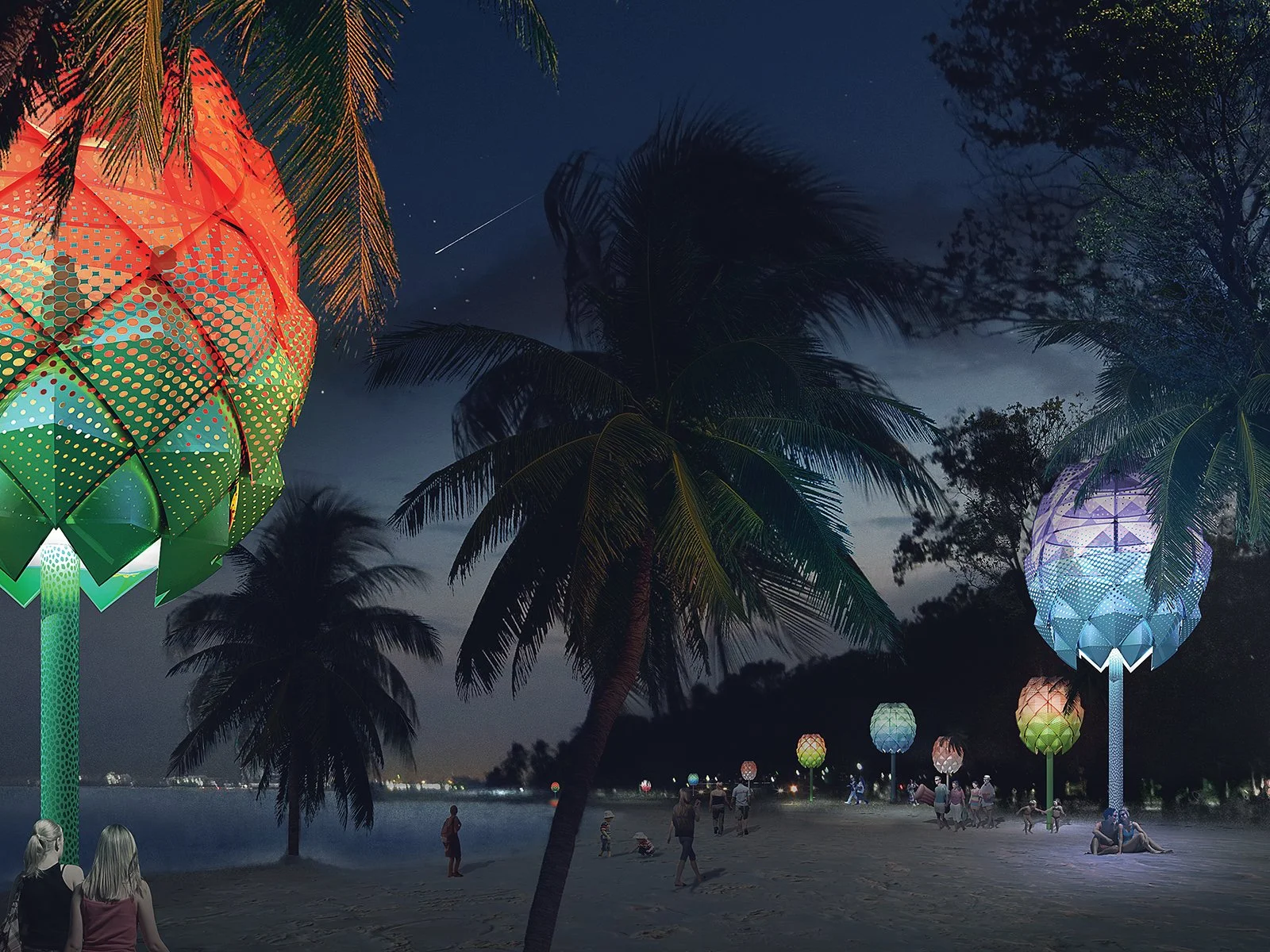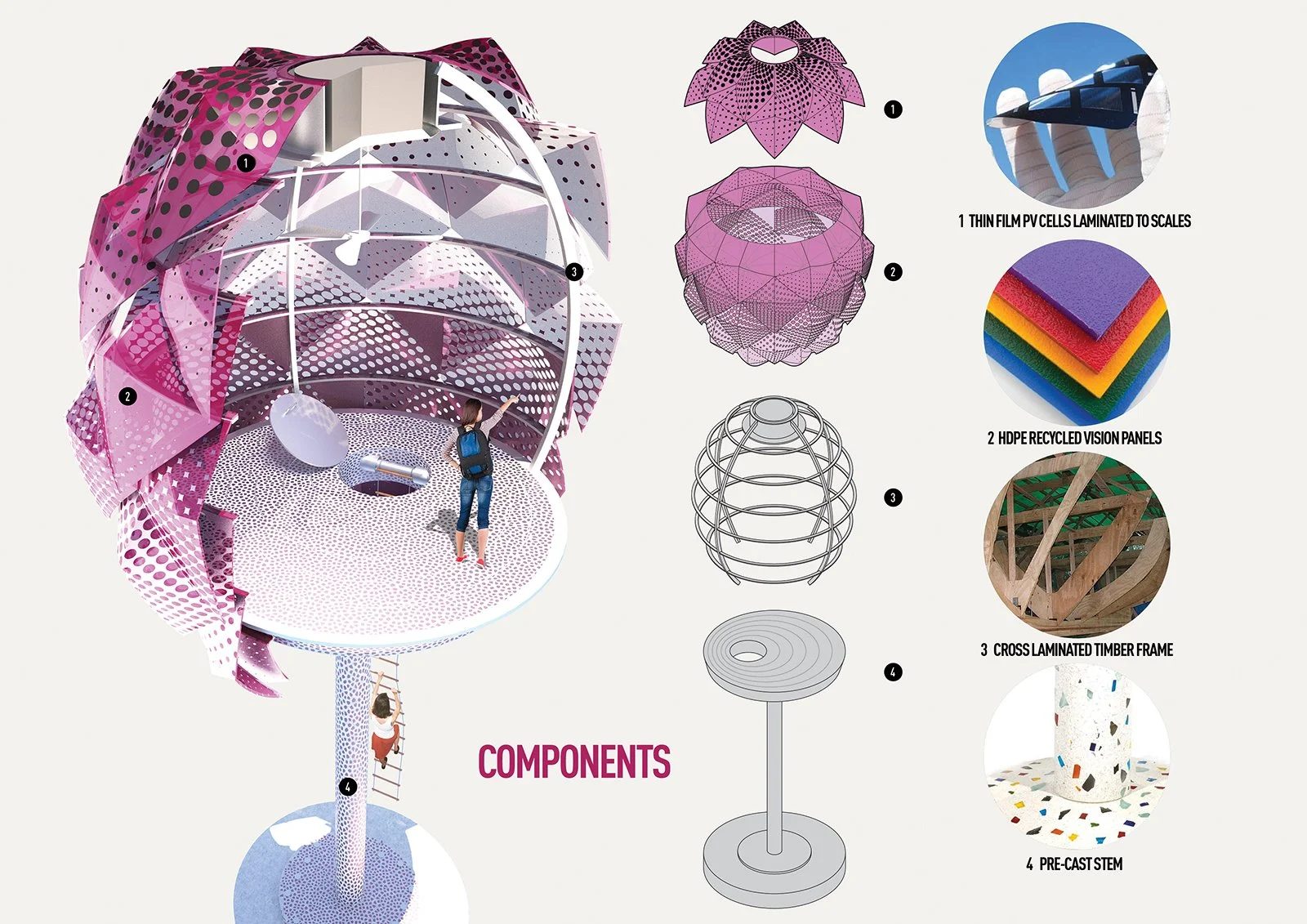Beach Hut: A Beacon on the waterfront
SPARK’S BEACH HUT ALONG EAST COAST PARK, SINGAPORE, in the day.
SPARK’S BEACH HUT ALONG EAST COAST PARK, SINGAPORE, in the night.
SPARK’s Beach Hut was designed nearly a decade ago as a quiet act of optimism: to turn waste into shelter, pollution into possibility. Clad in shingles made from recycled ocean plastics (HDPE2), the structure drew inspiration from the Casuarina seedpods scattered along Singapore’s beaches. It wasn’t a manifesto or a solution, just a small shelter built to sit lightly on the shore, hoping to reframe the conversation around plastic waste.
At the time, the momentum felt real. Ocean clean-ups were gaining traction, public awareness was rising, and recycled materials were entering mainstream design discourse. We believed the message was landing. We thought the problem was understood. Beach Hut even won an award under the “Future Experimental” at the World Architecture Festival. The story was one of positivity.
But in 2025, the numbers tell a different story.
A recent article from the Lancet describes plastic as a “grave, growing, and under-recognised” threat to both human and planetary health. Microplastics are now found in our blood, lungs, and even placentas. Chemical additives are linked to cancer, heart disease, infertility, and developmental disorders. The crisis is no longer just environmental, it’s deeply human. And it’s accelerating. At current rates, plastic production is expected to nearly triple by 2060.
PROCESS BEHIND BEACH HUT’S FORMATION.
COMPONENTS IN BEACH HUT.
So where does that leave a project like Beach Hut?
Beach Hut becomes more than a beachside folly it stands as a beacon for positive change, a reminder that architecture can participate in the conversation. It offers not a solution, but a story about care, reuse, and material responsibility. About how small, deliberate acts can create space where new narratives can take root.
Today, that question feels even more urgent. As plastic pollution escalates into a global health and environmental crisis, Beach Hut becomes more relevant, not because it solves the problem, but because it keeps the conversation alive.
Beach Hut doesn’t shout. It shelters, gathers, and quietly reminds us: design can do better. And while we may not be winning the battle against waste, the answer is not to stop trying. It's to keep building and telling better stories that lead to action.




